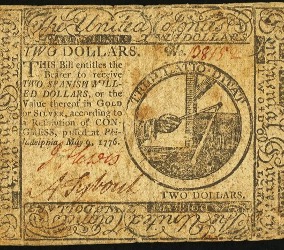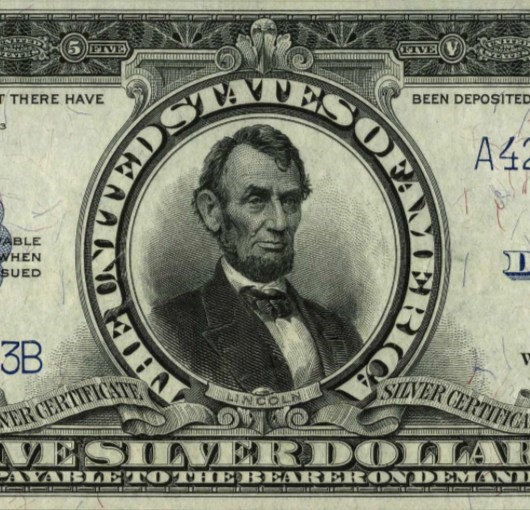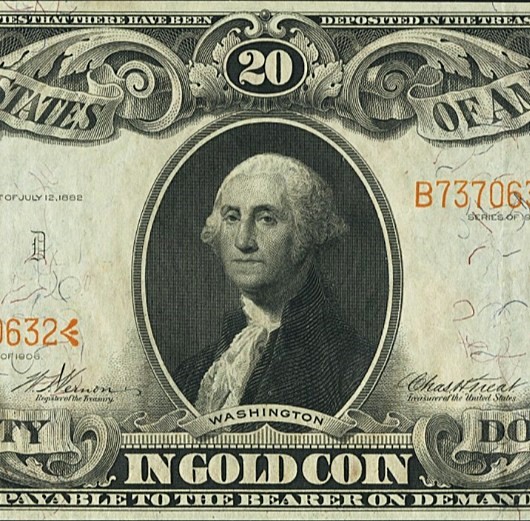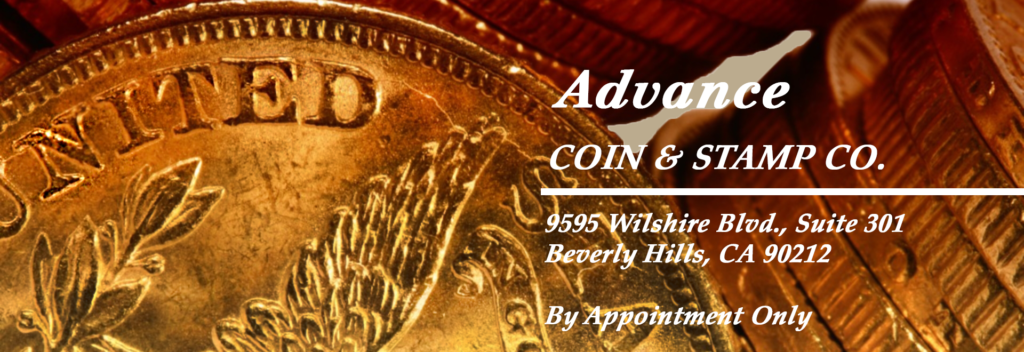Wars have historically all have been very expensive. It was the Civil War that provided the main impetus for the United States Government to issue it’s first Federal paper currency in late 1861. That was far from the first paper money seen in the United States, though. Currency was issued beginning in 1690 (primarily by the individual original Colonies) and the Continental Congress issued monetary notes beginning in 1775 to pay for the costs associated with the American Revolution. Rapid inflation following the Revolutionary War rendered most of these Continental Notes nearly worthless and substantially undermined the people’s confidence in paper currency. It would be some 80 years before the Federal Government would again issue paper money.

State Bank Notes were issued (mainly from the 1830s through the 1850s) by private financial institutions to facilitate growth when coinage couldn’t sufficiently meet the needs of commerce. Due to the lack of regulation, many of these banks failed, and collectors today often refer to these issues as “Broken Bank Notes.”
Despite its rather checkered history, the U.S. Government had no choice but to turn again to paper money to finance the Civil War in late 1861. Gold and silver coins quickly disappeared from circulation as nervous citizens began to hoard their money, leaving only copper coins and tokens for everyday commerce. The first currency release (called “Demand Notes”) consisted of three denominations: $5, $10 and $20, and was issued in the late summer of 1861. These were followed by the “Legal Tender” series in 1862, which spanned a wide range of denominations from $1 to $10,000. Fractional currency was also issued during this period in denominations ranging from 3 cents to 50 cents.
Major Types of U.S. Currency
U.S. currency breaks down into two major areas.
| 1 | Large size – made from 1861 through 1929 and measuring | 7-3/8” X 3-1/8” |
| 2 | Small size – made from 1929 through today, and measuring | 6-3/16 X 2-5/8” |
Eight Major Types of Large Size Currency
Within two major groups, there are just over half a dozen or so major types. These are primarily distinguished by the color of the seal and the type of “backing” which the currency received. Backing would be defined as; the redemption promise by the U.S. Government.
There were eight major types of large size currency made. There were four minor types, which due to their limited use and extreme rarity today, are only collected by a very few. The important types of large size notes include:
- Demand Notes, made from 1861-1862
- This was the original Federal currency issue and is unique in that there is only one serial number on the note, and they do not bear the Treasury Seal of the United States. They also were responsible for the term “Greenback” coming into use. Only three denominations were made, and all are quite scarce today.

- Legal Tender Notes, also called “United States Notes”
- This was a major issue that began in 1862 and included denominations from $1 through $10,000, though any note over $100 face value is clearly rare today. They are usually found with a red seal, and they usually carried the obligation that they were “a legal tender for all debts, public and private.” Some of the most iconic designs appeared on this series, including the $10 Bison note and the $5 “Woodchopper” note. George Washington made his appearance on the $1 bill in 1869, and has remained there ever since.
- Silver Certificates: Authorized by the acts of 1878 and 1886
- The Silver Certificates were a wide and very long running series. Their obligation stated that there had been deposited in the Treasury of the United States a number of silver dollars equivalent to the face value on the note, and the note was redeemable at the office of the Treasurer in Washington D.C., for silver. Some of the classic designs found on these include the gorgeous Educational Series notes of 1896, the “Indian” $5 note, the “Porthole” Lincoln $5 and the “Tombstone” $10. While the early issues usually bore red or brown seals, the later issues featured blue seals. Silver Certificates were still in use though the mid 1960s.

- Treasury Notes, also known as “Coin Notes”
- Authorized by the Legal Tender act of 1890, Treasury Notes were a rather short-lived series. They were simply backed by “coin,” but the metallic content of that coin was left up to the Secretary of the Treasury. While most are scarce today, this series has some of the rarest and most desired notes, including the famous “Watermelon” reverses found on the $100 and $1000 notes, named because of the appearance of the large “0’s.”
- National Bank Notes: This is a very large and extensive series and began in 1863.
- Chartered National Banks were allowed to issue their own currency, although all the notes were printed by the Bureau of Engraving and Printing and were of a consistent design from bank to bank. There were thousands of issuing banks, and because of the rarity of the notes from certain banks, a complete collection is not a realistic goal. However, many collect these by State or locality. These notes are found with blue, red and brown seals on large size notes.
- Federal Reserve Bank Notes
- With the establishment of the Federal Reserve System, 12 large banks were set up and currency bearing the name of each was issued in two series: 1915 and 1918. These were titled “National Currency” at the top and were “Secured by United States Certificates of Indebtedness or United States one year gold notes, deposited with the Treasurer of the United States of America.”
- Federal Reserve Notes
- These are the precursors of our currency in circulation today. Most of the large size notes were issued under the series of 1914, and first appeared with red seals, followed by blue seals. Denominations from $5 to $10,000 were issued, however anything above a $100 note is rare and any note above $1000 is extremely rare, almost non-existent. While the large size Federal Reserve notes were redeemable in gold, that privilege ended in 1933.
- Gold Certificates
- Perhaps the most coveted and attractive of all the large size currency issues were the Gold Certificates, issued in denominations of $10 and up and usually bearing a bright golden-orange reverse. They were redeemable in gold coin through 1933.

Understand that the wallets of the average citizen 100 years ago contained a far wider variety of banknotes than we see today. Many different designs of each denomination were circulating, and it took a careful eye to determine what you were spending and what you were receiving back in change.
Advancecoin.com – Collectors.com

